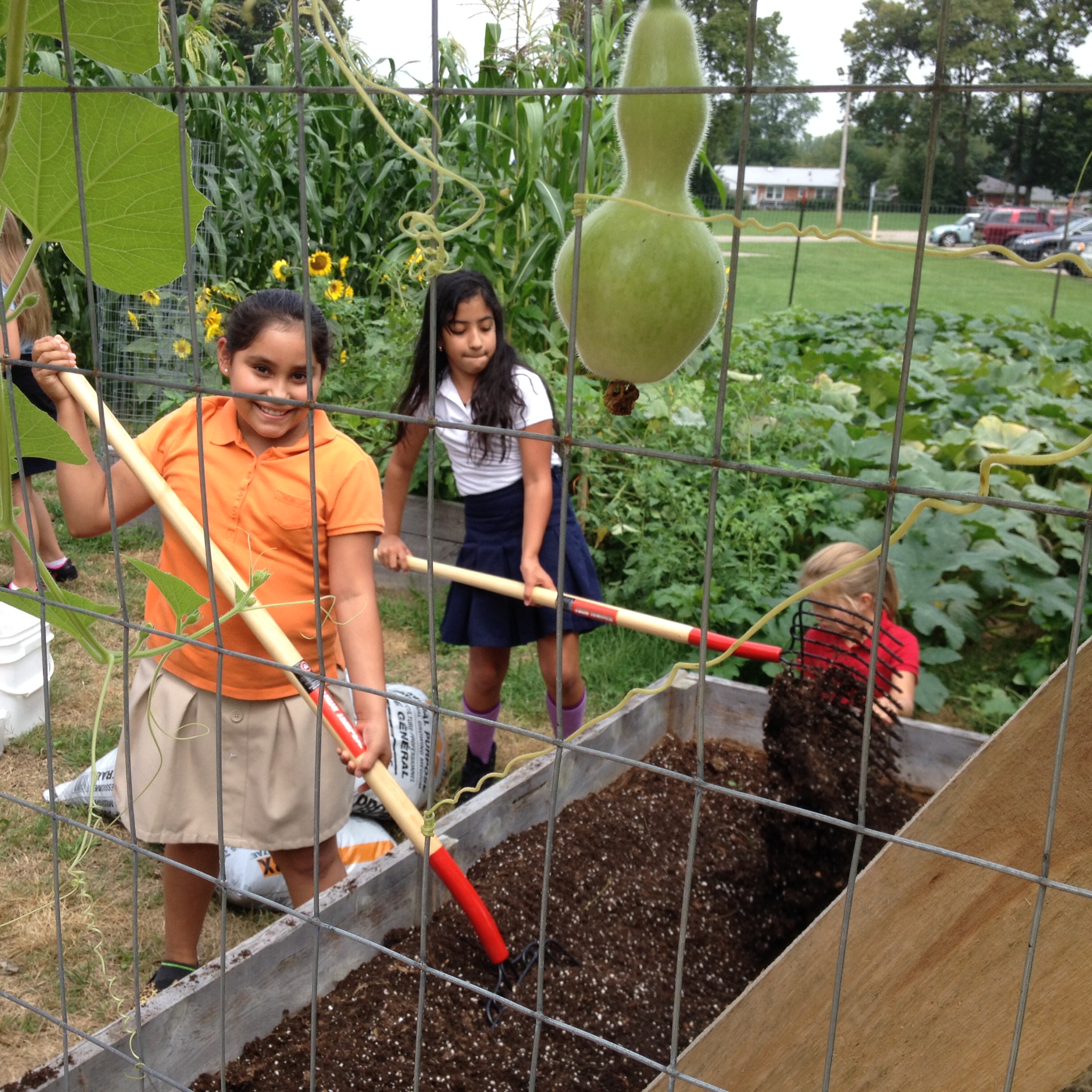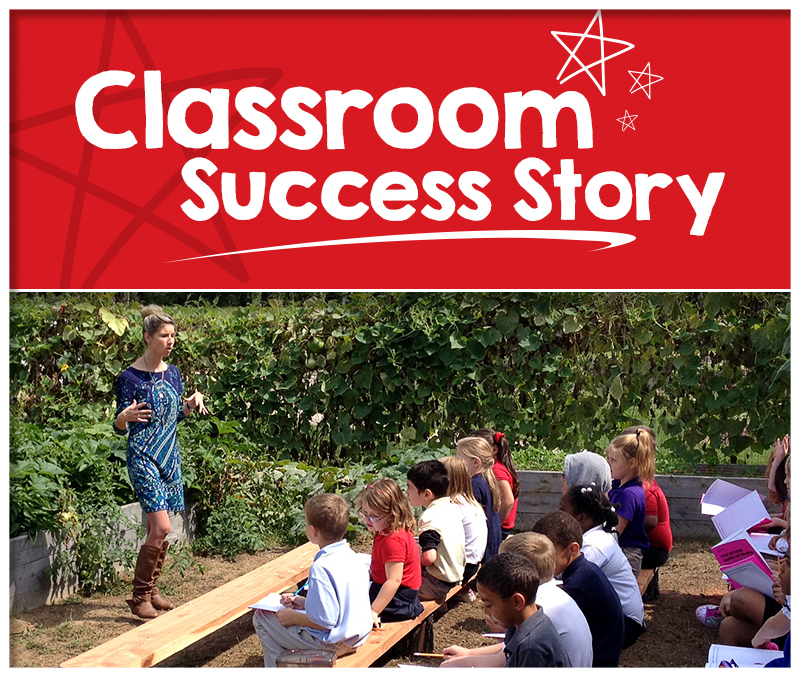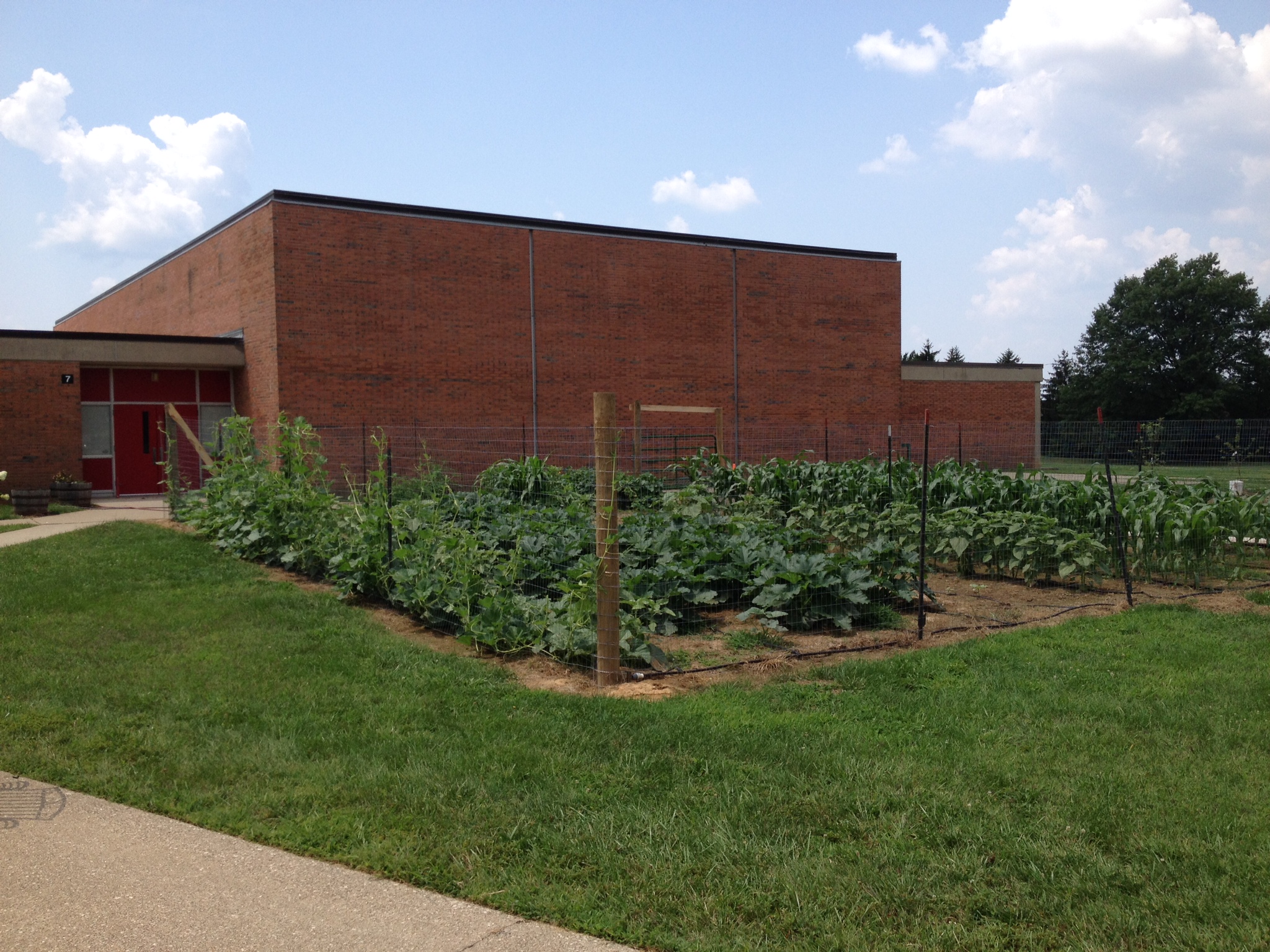What do you do with a low-income school, a few donated garden boxes, and no funding for plants or supplies? To this question, teachers Debbie Rutledge-Lockyear and Janet White’s response was confident. You make it work.
When they received the garden boxes, the teachers began dreaming of creating a community garden where they could give their arts and humanities students a hands-on learning experience.
“We were thinking, ‘Gosh, this is awful, ‘” Ms. Rutledge-Lockyear said. “’We wish something would happen, but how? We don’t have money.”
Teachers: Debbie Rutledge-Lockyear and Janet White
School: Harstern Elementary School in Louisville, KY

Luckily that’s not the end of their story. They knew funds were available through AdoptAClassroom.org and other grant opportunities, the teachers just had to find the right way to ask for them.
In addition to her teaching load, Ms. Rutlege-Lockyear began researching and writing grants. However, she also needed to know what she was asking for. Since it was their first time creating a garden project like this, it was difficult for the teachers to know exactly what they needed for materials to get it going.
“It steamrolled into a vision of what we thought it could be,” said Ms. White. “It just kind of blossomed from there.”
A local garden center in the community helped the teachers understand what materials they needed. They applied the attitude of “just try it,” and soon they began to receive the first round of funds for their project.

Today, the Hartstern Elementary garden is a centerpiece of their school community, even parents come in to get their hands dirty. Ms. Rutledge-Lockyear mentioned that their team of supporters have really been integral to the success of their garden project.
“Doing something like this by yourself would be really hard,” she said. “Don’t be afraid to reach out and look for those grants and fundraising opportunities. If we wouldn’t have looked for it, had we not been willing to take the risk, we wouldn’t have the opportunity.”

The teachers started small and centered the project around their students. Some of the kids spent the summers in the garden and helped with putting up the fence, watering, and building the irrigation system. When school started in the fall, the garden grew into an important piece of their school curriculum. Some of the subjects covered in the garden include math, science, social studies, art, music, and even dance.
The garden reaches all grade levels throughout the school. For example, kindergarteners use the garden to learn about living and non-living objects while 5th graders spend time developing their story telling skills. Emotional Behavioral Disorder (EBD) students research gourds, plant their own gourds and make predictions about what will happen as they grew. In the cafeteria, the students share the food they’ve grown in their garden.
From designing scarecrows to growing corn, students continue to help develop the garden and you can hear the pride for their work in their voices.

“The best part about it is helping out the school and helping the earth, too,” said one student.
“I like the part where in the past we had to go somewhere else just to see a garden,” said another student. “We don’t have to travel when we can just go here every day.”

The team continues to grow their project. Today they are in the process of planning a butterfly garden. They’ve enlisted the help of a master gardener with the design and students’ homework is connected to the next garden expansion.
Hastern Elementary is no different than many public schools across the nation where students need a bit of extra support. Today, more than half of America’s children in public schools live in poverty. At Hastern Elementary, 70% of students receive free and reduced school lunch. The school supports students from diverse backgrounds with different needs. More than one student pointed out that their garden gives them a unique opportunity to share a valuable experience, regardless of their lives back home.

“My favorite part about the garden is the part where the people at home that don’t have a garden or flowers can come here and plant,” said one student.

When teachers have the resources they need to create experiences like these, all students are given the tools they need to thrive. If you are a teacher looking to start your own garden, it is totally doable. Ms. Rutledge-Lockyear has this advice for you:
“Start small,” she said. “Instead of taking a giant jump, keep your vision but start small and grow from that.”
There are thousands of teachers waiting to be adopted. Click here to find them!
Do you have an awesome Classroom Success Story you would like to share with us? Please contact Program Coordinator Melissa Hruza at [email protected]!


